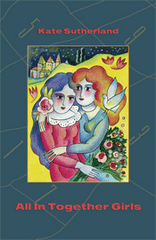
I hosted the initial incarnation of the Short Story Reading Challenge in 2008 and was thrilled at the number of readers that I encountered through it who proved to be already devotees of or who were willing to embrace the short story form. I took a year off from challenges this past year, but after several expressions of interest in another round, I'm feeling enthusiastic about a revival of the Short Story Reading Challenge for 2010. So here goes. The challenge could take a number of different forms depending on your level of familiarity with short stories and on the amount of reading time you expect to have at your disposal in the coming year.
Options 1 & 2: If you're short on time, you can simply commit to reading ten short stories by ten different authors over the course of 2010. If you're relatively new to reading short stories, any ten will do. If you’ve already got a lot of short stories under your belt, make it ten short stories by ten writers whose work you have not yet read. How about that—a year long challenge that you could conceivably complete in the course of a day! Of course, I would encourage you not to do that but rather to heed the words of Mavis Gallant, short story writer extraordinaire, who advises:
Stories are not chapters of novels. They should not be read one after another, as if they were meant to follow along. Read one. Shut the book. Read something else. Come back later. Stories can wait.
Completing this version of the challenge could be as simple as participating in the short story discussions at A Curious Singularity throughout the year (after a lengthy hiatus, A Curious Singularity is also slated for revival in 2010⎯stay tuned for an announcement about that). Or picking up a short story anthology, whether of classic or contemporary stories, or of stories of a particular genre or on a particular theme, and slowly working your way through at least ten of the stories contained within. Of course, my hope is that once you get started you’ll get hooked and you’ll spiral out into other stories by those writers and more!
Options 3 & 4: If you've got a bit more time to devote to this endeavour, you can commit to reading between five and ten short story collections over the course of 2010. Again, if you're a short story novice, the world is your oyster as far as selection is concerned. But if you're a seasoned short story reader, you'll want to choose collections by writers whose short stories you have not yet encountered.
Option 5: This is the custom option under the rubric of which you can tailor your reading list to best meet your personal reading aspirations. You might wish to craft a list that focuses on a particular place, or era, or genre. Or you might wish to include reading about short stories as well as of short stories, for example, such works as Frank O'Connor's The Lonely Voice: A Study of the Short Story. It's entirely up to you.
The blog dedicated to this challenge can be found here. On it, participants can post reading lists, recommendations, and reviews of specific short stories and short story collections, as well as ruminations on and links related to the short story form more generally. If you'd like to participate in the challenge, let me know in the comments section below or via e-mail. Even if you don't plan to participate in the challenge, please post the titles of some of your favourite shorts stories or the names of your favourite short story writers below so that participants in the challenge can benefit from your recommendations.






